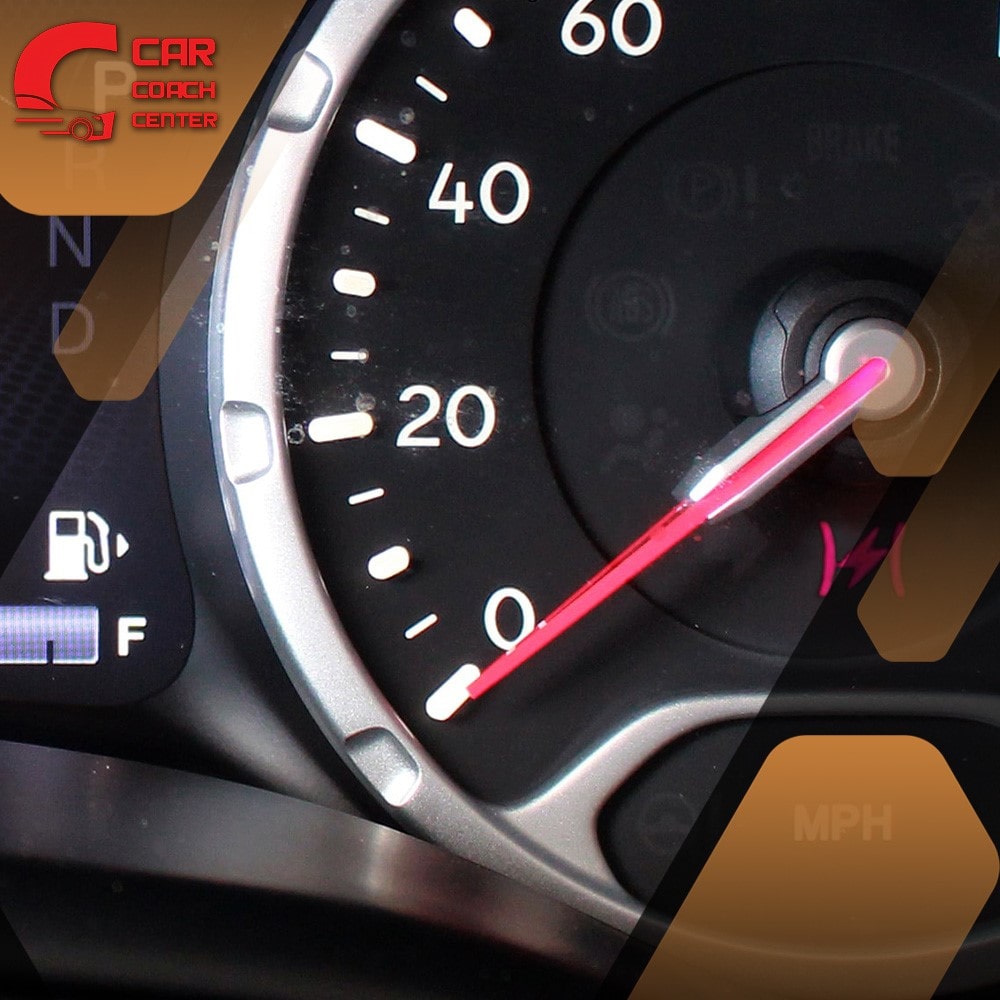Jeep Red Lightning Bolt On The Dash
As you embark on your adventurous journeys with your trusty Jeep, the last thing you want to encounter is a mysterious warning light suddenly illuminating your dashboard. The red lightning bolt is one such enigmatic symbol that often leaves Jeep owners perplexed. With its striking appearance, it demands attention and immediate action. But fear not, fellow Jeep enthusiasts!
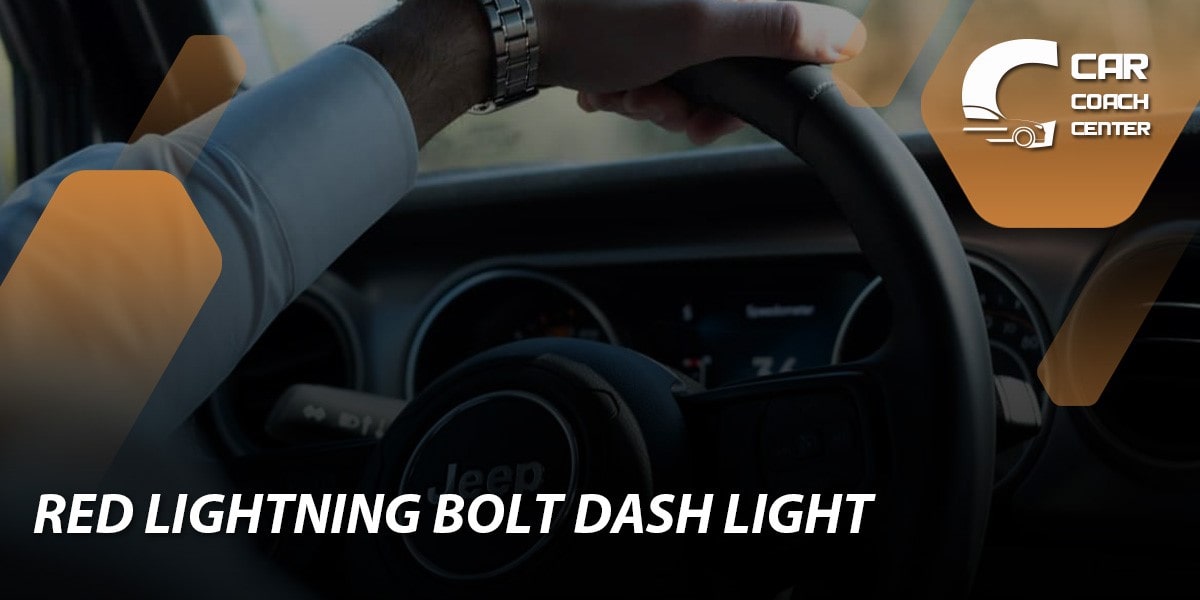
This comprehensive article will unravel the secrets behind the red lightning bolt on your dashboard, exploring its significance and providing you with the knowledge to respond effectively. Understanding the Electronic Throttle Control (ETC) system’s role is crucial, as it is intricately linked to this warning light. We’ll delve into the mechanics of the ETC system, shedding light on its functions and how it affects your Jeep’s performance.
Moreover, we’ll equip you with valuable DIY troubleshooting tips, enabling you to identify common triggers and take preventive measures to keep your Jeep running smoothly. Beyond the red lightning bolt, we’ll also familiarize you with other essential dashboard warning lights, ensuring you stay informed and proactive in maintaining your vehicle’s health. So, let’s dive in and empower ourselves with the knowledge to face the red lightning bolt confidently and ensure many more thrilling adventures on and off the road.
The Mysterious Red Lightning Bolt: Decoding Your Jeep’s Message
As you cruise down the open road or conquer challenging terrains with your beloved Jeep, the sudden appearance of a red lightning bolt symbol on your dashboard can be quite unsettling. This intriguing warning light has left many Jeep owners scratching their heads, wondering about its meaning and implications. So, let’s delve into the mystery and decode the message behind the red lightning bolt.
Understanding the Symbol: What Does the Red Lightning Bolt Mean?
The red lightning bolt indicates a problem with your Jeep’s Electronic Throttle Control (ETC) system. The ETC system regulates the engine’s throttle opening, ensuring that the air entering the engine matches the driver’s acceleration commands. It uses electronic sensors and an onboard computer to control the throttle, replacing the traditional mechanical connection between the accelerator pedal and the throttle body.
Common Triggers for the Red Lightning Bolt
Several factors can trigger the red lightning bolt warning light. One common culprit is a malfunctioning throttle body. Over time, the throttle body may accumulate carbon deposits or become dirty, leading to poor airflow and throttle response issues. Another potential cause is a faulty throttle position sensor (TPS), which fails to accurately detect the throttle’s position, causing a disruption in the ETC system’s operation. Issues with the accelerator pedal position sensor or wiring problems can also activate the warning light.
Decoding the Warning: How to Respond
When the red lightning bolt appears on your dashboard, it’s crucial not to panic. The ETC system is designed to go into “limp mode” to protect the engine from further damage when an issue arises. In this mode, your Jeep may exhibit reduced power and limited acceleration.
To respond effectively, pulling over to a safe location is recommended if you experience any drivability issues. Once stopped, turn off the engine, wait a few minutes, and restart it. The warning light may sometimes disappear if the issue is a momentary glitch. However, if the light persists, it’s best not to ignore it.
Seeking Professional Assistance
While some minor issues may be resolved with a restart, it’s essential to have your Jeep inspected by a qualified mechanic to diagnose the root cause accurately. Modern vehicles rely heavily on complex electronic systems, and attempting DIY fixes without proper knowledge can lead to further complications.
Prevention is Key: Regular Maintenance
To prevent the red lightning bolt warning light from surprising you during your adventures, performing regular maintenance on your Jeep’s ETC system is essential. Regularly inspect and clean the throttle body, change the air filter per the manufacturer’s recommendations, and ensure all sensors function correctly.
Under the Hood: Understanding the Role of the Electronic Throttle Control (ETC) System
The Electronic Throttle Control (ETC) system is crucial to modern vehicles, including your trusty Jeep. As automotive technology continues to evolve, traditional mechanical systems are being replaced by sophisticated electronic counterparts, and the ETC system is a prime example of this advancement. To gain a deeper appreciation for your Jeep’s performance and understand the significance of the red lightning bolt warning light, let’s look under the hood and explore the role of the ETC system.
The Transition from Mechanical to Electronic Throttle Control
In the past, vehicles used mechanical linkages to connect the accelerator pedal to the throttle body. When the driver pressed the gas pedal, a cable physically opened or closed the throttle, allowing more or less air into the engine. However, with the advent of electronic systems, the ETC system now takes charge of this process, offering greater precision and control over engine performance.
How the ETC System Works
The ETC system has several components that regulate engine power and maintain optimal performance. An accelerator pedal position sensor detects the pedal’s position and sends signals to the Powertrain Control Module (PCM). The PCM, which acts as the vehicle’s brain, processes this information and communicates with the throttle actuator, an electronically controlled motor that adjusts the throttle’s position.
Advantages of Electronic Throttle Control
The shift from mechanical to electronic throttle control brings various benefits to both drivers and vehicles. One of the key advantages is improved fuel efficiency. The ETC system allows the PCM to regulate the air-fuel mixture precisely, optimizing combustion and reducing unnecessary fuel consumption. Additionally, electronic control enhances vehicle responsiveness, resulting in smoother acceleration and a better driving experience.
The Red Lightning Bolt Connection
Given its central role in managing engine performance, any irregularity or malfunction in the ETC system triggers the red lightning bolt warning light on the dashboard. This warning indicates that the PCM has detected a fault in the ETC system, prompting it to activate “limp mode” to prevent further damage.
ETC System Maintenance and Care
Regular maintenance is crucial to ensure your Jeep’s ETC system operates flawlessly. Cleaning the throttle body periodically helps prevent carbon buildup, ensuring smooth airflow and throttle response. Additionally, keeping the air filter clean and replacing it at recommended intervals aids in maintaining optimal engine performance.
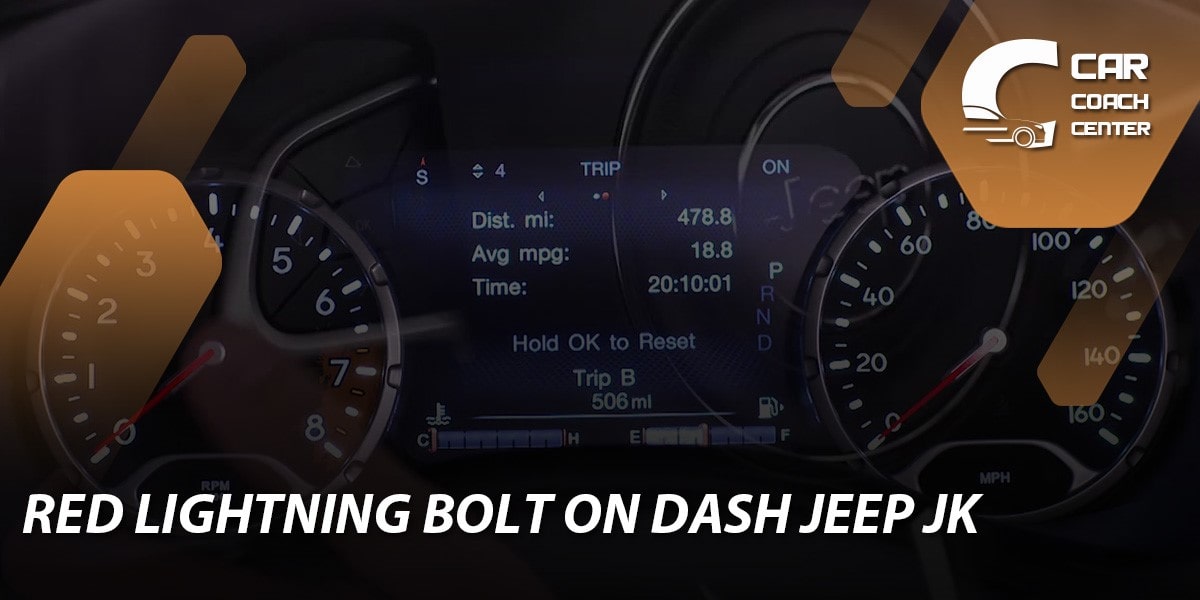
Don’t Panic! Common Reasons for the Red Lightning Bolt and How to Respond
Encountering the red lightning bolt warning light on your Jeep’s dashboard can be nerve-wracking, but fear not, as it often indicates a manageable issue with the Electronic Throttle Control (ETC) system. Understanding the common triggers behind this warning light and how to respond calmly can save you from unnecessary stress and potentially costly repairs. Let’s explore some of the typical reasons for the red lightning bolt and the appropriate steps to take.
Dirty Throttle Body: The Culprit of Carbon Deposits
One of the most common causes of the red lightning bolt is a dirty or clogged throttle body. Over time, carbon deposits can accumulate inside the throttle body, hindering smooth airflow and disrupting the ETC system’s operation. When this occurs, the throttle body may not open or close as it should, leading to decreased engine performance.
How to Respond
If you encounter the red lightning bolt warning light, find a safe spot to pull over. Once stopped, turn off the engine and inspect the throttle body. If you have the necessary tools and expertise, you can attempt to clean it yourself using a throttle body cleaner. Otherwise, it’s best to have a qualified mechanic perform the cleaning and ensure the throttle body is restored to its optimal condition.
Faulty Throttle Position Sensor (TPS): The Signal Disruptor
Another common culprit is a malfunctioning throttle position sensor (TPS). The TPS is responsible for communicating the position of the throttle to the PCM, allowing the system to adjust the air-fuel mixture accordingly. When the TPS fails to provide accurate readings, it can trigger the red lightning bolt warning light and cause drivability issues.
How to Respond
If you suspect a faulty TPS, it’s essential to have it diagnosed and replaced by a professional mechanic. Tinkering with the TPS without the proper knowledge can lead to further complications. A trained technician will use diagnostic tools to pinpoint the problem and ensure your Jeep’s ETC system functions as intended.
Wiring and Connection Problems: The Invisible Culprits
The red lightning bolt may sometimes appear due to wiring or connection issues within the ETC system. Damaged wires, loose connections, or corroded terminals can disrupt the flow of information between various components, leading to warning light activation.
How to Respond
Addressing wiring and connection problems requires technical expertise, and attempting DIY repairs might exacerbate the issue. Suppose you suspect electrical problems are causing the warning light. In that case, it’s best to leave the diagnosis and repair to a certified mechanic who can trace the fault and make the necessary repairs.
Other Potential Triggers: Beyond the Basics
While dirty throttle bodies, faulty TPS sensors, and wiring issues are among the primary culprits, other reasons could trigger the red lightning bolt. These may include issues with the accelerator pedal position sensor, problems with the PCM, or even a software-related glitch.
How to Respond
In such cases, it’s crucial to seek professional assistance. A thorough inspection and diagnostic testing by an experienced mechanic will help identify the root cause accurately. By relying on their expertise, you can avoid unnecessary guesswork and quickly resolve the problem.
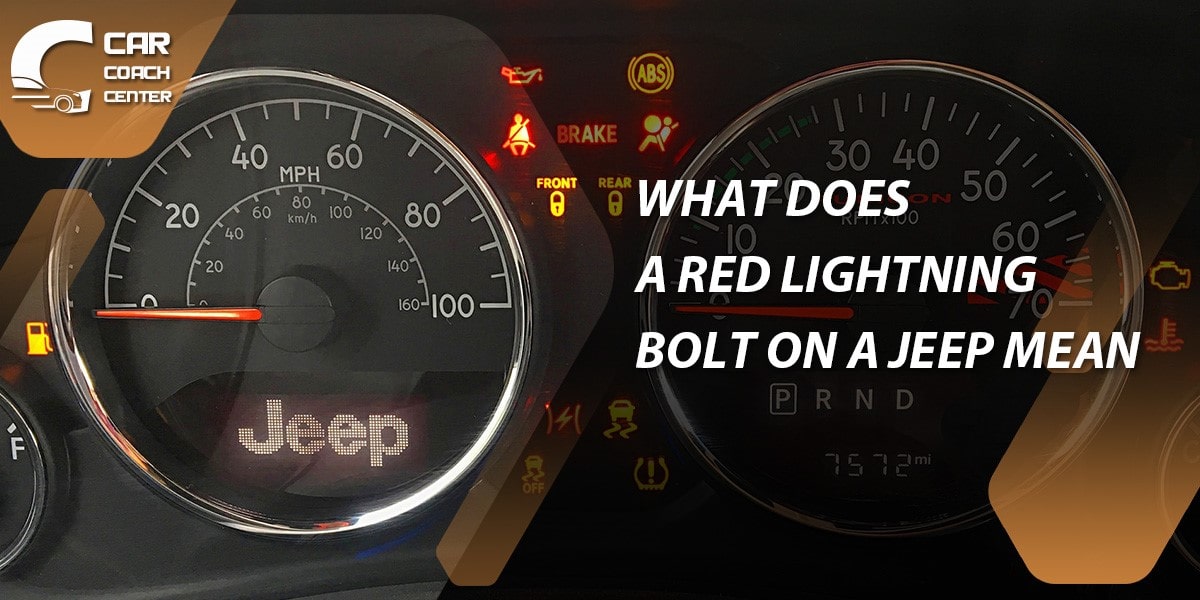
DIY Troubleshooting: Tips to Check and Maintain Your Jeep’s ETC System
As a responsible Jeep owner, understanding how to perform basic troubleshooting and maintenance on your vehicle’s Electronic Throttle Control (ETC) system can be invaluable. While some issues may require professional intervention, you can take several DIY steps to ensure your Jeep’s ETC system operates smoothly and prevent potential problems. Let’s explore some helpful tips to effectively check and maintain your Jeep’s ETC system.
Regular Visual Inspection
Performing regular visual inspections under the hood can help you identify any visible issues with the ETC system. Check for loose or damaged wiring, corroded connectors, or any signs of wear and tear on components like the throttle body and sensors. If you notice any abnormalities, consider seeking professional assistance to address the problem promptly.
Clean the Throttle Body
Cleaning the throttle body is a simple yet effective DIY maintenance task. A dirty throttle body can disrupt airflow and lead to ETC system issues, triggering the red lightning bolt warning light. To clean it, disconnect the air intake hose, locate the throttle body, and use a throttle body cleaner and a soft cloth to remove any carbon deposits or dirt. Take care not to damage any delicate components during the process.
Check and Clean Air Filters
Clean air filters play a vital role in maintaining optimal engine performance. Dirty air filters can restrict airflow, affecting the ETC system’s efficiency. Regularly inspect the air filter and clean or replace it as your Jeep’s manufacturer recommends to ensure smooth functioning.
Inspect and Secure Wiring Connections
Ensure all wiring connections related to the ETC system are secure and free from damage. Loose or disconnected wires can disrupt the flow of information between components, leading to warning light activation. Gently wiggle the wires and connectors to check for any play or instability. Secure the connections properly or seek professional repair assistance if you find any issues.
Perform a Throttle Calibration
To enhance performance, throttle calibration helps your Jeep’s PCM learn the correct throttle position. To perform this DIY task, start your Jeep and let it idle for about 15 minutes to reach the normal operating temperature. Turn off all electrical accessories and turn the steering wheel from lock to lock. Then, switch off the engine, wait for a minute, and restart the Jeep. This process allows the PCM to recalibrate the throttle position and ensure accurate readings.
Use Quality Fuel and Perform Regular Maintenance
High-quality fuel is essential for properly functioning your Jeep’s ETC system. Poor-quality fuel can lead to carbon deposits and engine performance issues. Sticking to the recommended maintenance schedule will help prevent potential problems by addressing minor issues before they escalate.
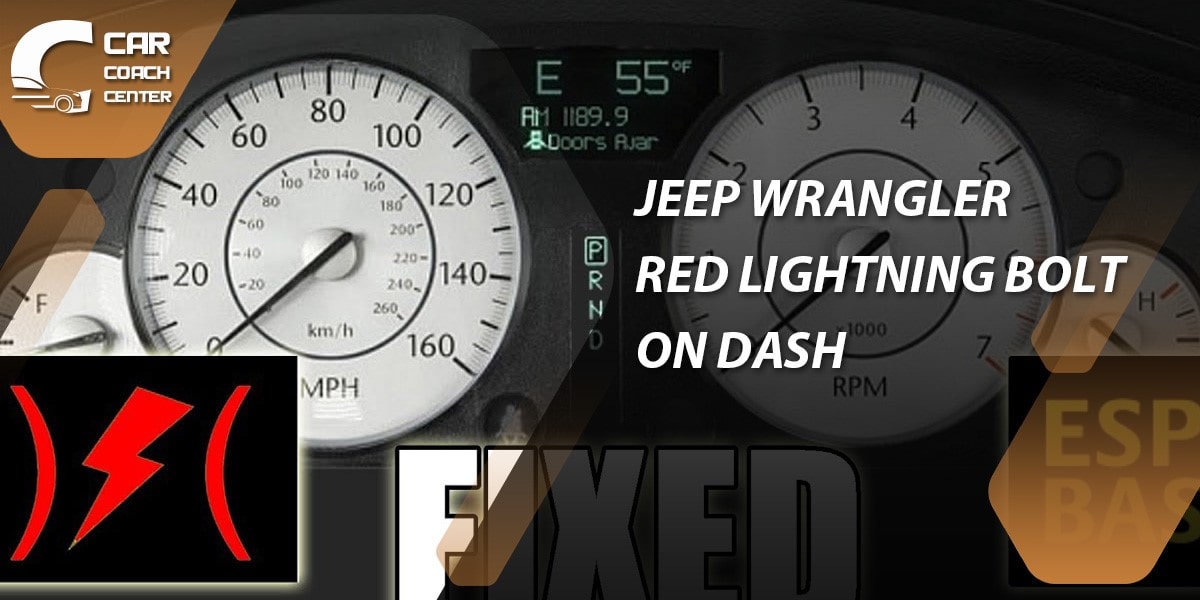
Beyond the Bolt: Other Important Dashboard Warning Lights You Should Know
While the red lightning bolt on your Jeep’s dashboard grabs immediate attention, it’s not the only warning light you should know. Modern vehicles come equipped with various dashboard warning lights, each representing a specific system or component that requires attention.
Familiarizing yourself with these indicators can help you respond promptly to potential issues and keep your Jeep running smoothly. Let’s explore other essential dashboard warning lights you should know about and their significance.
Check Engine Light
The infamous “Check Engine” light is perhaps the most well-known warning light. When this light illuminates, the Powertrain Control Module (PCM) has detected a fault in one or more of the vehicle’s systems. It could be related to the engine, emission control, fuel system, or other critical components. While a steady light may suggest a non-emergency issue, a flashing light requires immediate attention, indicating a severe problem that could lead to engine damage if not addressed promptly.
ABS (Anti-Lock Braking System) Light
The ABS light signifies a problem with your Jeep’s Anti-Lock Braking System. The ABS system helps prevent the wheels from locking up during hard braking, allowing you to maintain control and steer while braking. If the ABS light stays on, it indicates a malfunction in the system, and although your standard braking system will still function, the ABS feature may not engage in emergencies.
Battery/Charging System Light
The battery or charging system light typically resembles a small battery icon. When this light illuminates, it indicates an issue with your Jeep’s charging system. It could be due to a failing alternator, loose or damaged belts, or a discharged battery. If left unattended, this can lead to a drained battery, stranding you.
Oil Pressure Light
The oil pressure light resembles an oil can and warns you about the engine’s low pressure. Low oil pressure can result from insufficient oil levels, a failing pump, or leaks. Driving with low oil pressure can cause severe engine damage, so it’s essential to address this immediately.
Tire Pressure Monitoring System (TPMS) Light
The TPMS light indicates that one or more of your tires has low air pressure. Proper tire pressure is essential for safe driving, fuel efficiency, and longevity. When the TPMS light comes on, check your tire pressures and inflate them to the recommended levels.
Airbag System Light
The airbag system light resembles a seated figure with a deployed airbag in the front. When this light stays on, it indicates a vehicle airbag system problem. In an accident, a malfunctioning airbag system may fail to deploy properly, compromising passenger safety.
When to Call for Backup: Consulting a Mechanic for Red Lightning Bolt Concerns
As an enthusiastic Jeep owner, encountering the red lightning bolt warning light on your dashboard can be unsettling. While some DIY troubleshooting can be helpful, there are situations where seeking professional assistance becomes necessary.
Knowing when to call for backup and consulting a qualified mechanic for red lightning bolt concerns is essential to ensure the proper diagnosis and resolution of potential issues. Let’s explore when to seek expert help and why entrusting your Jeep to a skilled mechanic is the right decision.
Persistent Warning Light
If the red lightning bolt warning light continues to illuminate even after you’ve performed basic troubleshooting and maintenance, it’s a clear sign that the issue may be beyond your expertise. The ETC system is a complex electronic component, and the warning light could be triggered by various factors that require specialized knowledge and diagnostic tools to identify accurately.

Lack of Expertise and Tools
While some DIY tasks are manageable, the ETC system involves intricate electronic components and systems. Without the necessary expertise and specialized tools, attempting complex repairs can lead to further complications and potentially costlier repairs down the line. A trained mechanic has the skills and equipment to diagnose ETC system issues accurately and implement appropriate solutions.
Emission Control and Performance Concerns
The red lightning bolt warning light is closely linked to the ETC system, but its activation may also affect emission control and overall vehicle performance. If you notice a decrease in engine power, poor acceleration, or abnormal exhaust emissions, it’s crucial to have a mechanic inspect the ETC system and associated components thoroughly.
Safety and Reliability
Driving with a malfunctioning ETC system can compromise the safety and reliability of your Jeep. Ignoring warning lights can lead to unexpected breakdowns or potential engine damage. A qualified mechanic will ensure that your Jeep is in optimal condition, reducing the risk of safety hazards and enhancing the vehicle’s overall performance.
Preventive Maintenance and Comprehensive Diagnostics
A skilled mechanic addresses current issues and performs preventive maintenance to identify potential problems before they escalate. Regular diagnostic checks can catch small problems early, saving you from costly repairs in the future and ensuring your Jeep remains reliable and efficient.
Warranty and Expertise
If your Jeep is still under warranty, having a certified mechanic inspect and repair the ETC system ensures the warranty remains valid. Additionally, qualified mechanics possess manufacturer-specific training and expertise, providing you with reliable and trustworthy service.
Conclusion
In conclusion, understanding the red lightning bolt and the Electronic Throttle Control (ETC) system in your beloved Jeep is vital for maintaining its peak performance and ensuring a safe driving experience. Though mysterious at first, the red lightning bolt can be decoded with knowledge and composure.
By familiarizing ourselves with the common triggers and responding appropriately, we can address minor issues promptly or seek professional help. Beyond the bolt, knowing the significance of other dashboard warning lights empowers us to proactively identify potential problems in our Jeep’s various systems.
As a trusted resource, carcouchcenter.com provides valuable insights into Jeep maintenance, troubleshooting, and driving tips, offering a comprehensive guide for all Jeep enthusiasts. So, confidently embrace the adventures ahead, armed with the knowledge gained from this article, and let your well-maintained Jeep be the steadfast companion on every thrilling journey. Happy driving!
Why is the red lightning bolt on my Jeep's dashboard?
The red lightning bolt indicates an issue with the Electronic Throttle Control (ETC) system, which manages engine performance.
Can I fix the red lightning bolt issue myself?
Basic troubleshooting, like cleaning the throttle body, is possible, but for complex problems, it's best to consult a qualified mechanic.
Are there other important dashboard warning lights to watch for?
Yes, other crucial warning lights include the Check Engine, ABS, Battery/Charging, and Airbag system lights.

